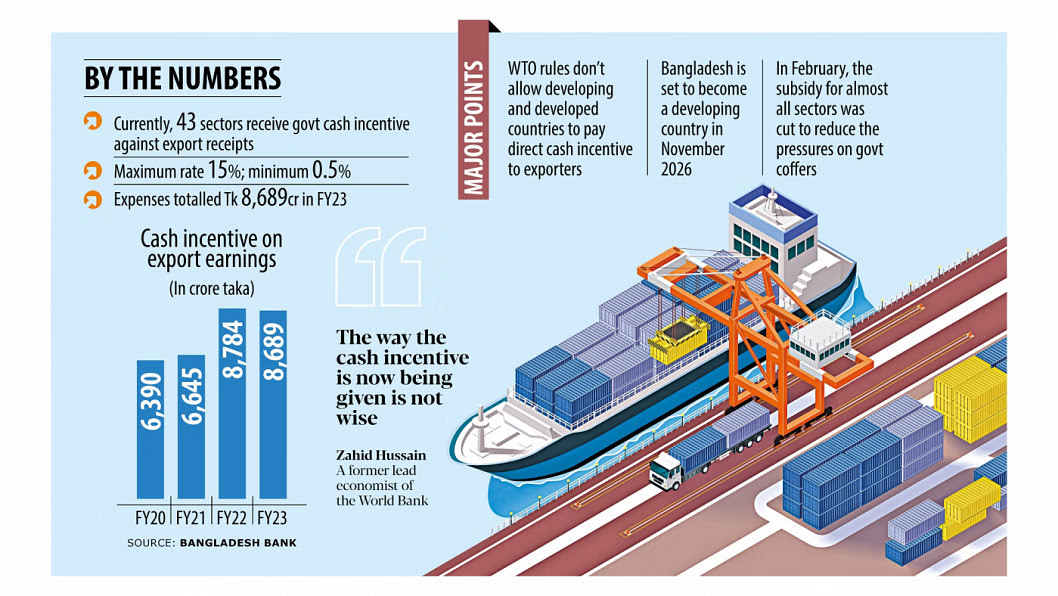Local garment manufacturers are pumping money to expand their capacity to produce technical garment items such as activewear and workwear since their demand is rising in the western markets.
A few years ago, Bangladesh had one or two technical or functional clothing factories. The number has already crossed 25 as industry people are making significant investments in the segment to grab more of the global market share.
Currently, the size of the global technical textile market is $179 billion and it is growing at nearly 5 percent a year to reach more than $224 billion by 2025, as per a study by the Bangladesh Garment Manufacturers and Exporters Association (BGMEA) and German development agency GIZ last year.
BGMEA members are increasingly moving towards the technical textile and garment markets as the association plans to export $100 billion worth of apparel items by 2030.
The trade body is drawing up a roadmap to hit the target from $42.61 billion in the last fiscal year and expects that a major portion of the $100 billion will come from the shipment of technical textile and garment items.
Snowtex Group exports $300 million worth of mainly activewear, workwear, and other garment items a year. Of the sum, nearly 90 percent are technical clothing items, said SM Khaled, managing director of the apparel exporter.
The firm, which has been producing technical garments mainly for European and US customers for the last two decades, plans for further expansion to meet the growing demand internationally.
In recent years, the inflow of work orders for technical clothing items has risen fast in the local garment factories mainly because buyers are moving away from China, the largest supplier of garments worldwide.
China is suffering from a shortage of skilled workforce in the garment sector as a majority of workers are switching to better-paying industries like electronics. The dragging trade tension between China and the US has also contributed to the shifting of orders from China to Bangladesh.
Russia was a major market for Bangladesh’s technical wear but the outbreak of the war in February has slowed the export growth a bit since shipments can’t be sent directly to the country. Garments are exported to the country through third parties.
Although China is losing its market share in the finished technical clothing items segment, it is still the biggest player when it comes to raw materials, fabrics and accessories needed to produce the products, Khaled said.
Local weavers can meet only 5 percent of the fabric demand. And fabrics are mainly imported from China, Korea and Vietnam.
In the case of accessories, domestic millers can supply 50 percent of the items, Khaled said.
Narayanganj-based Fakir Apparels started the production of technical garments such as workwear, hunting and maintenance wear four years ago since they fetch higher prices compared to regular garment items.
For instance, if a piece of a normal garment is sold at $7, the price of technical garment items is $15 per piece, Bakhtiar Uddin Ahmed, chief operating officer of the company, told The Daily Star. It has a target to expand the production lines to 50 by 2025 from 16 now.
“We are exporting more than $1 million worth of technical garments a month. But the export value will double within two or three years,” Bakhtiar said.
He thinks the future of the country’s garment sector lies in the technical garment items as the prices of fashion garment items are not going up to the level expected.
Mohammad Ayub Khan, managing director of Debonair, an exporter of activewear, says buyers are now offering lower prices because of higher inflation in the western markets and the Russia-Ukraine war.
Inflation in the eurozone surged to 10 percent in September, the highest since records began, owing to the soaring electricity and natural gas prices. In the US, the Consumer-Price Index rose 8.3 percent in August from the same month a year ago.
The EU and the US together account for around 85 percent of Bangladesh’s garment shipments.
Kamrul Hassan Kibria, a senior executive for merchandising at Bitopi, a jacket exporter, said his company ships 3.50 lakh pieces of insulated jackets a month and is planning an expansion as a lot of orders are relocating to Bangladesh.
















